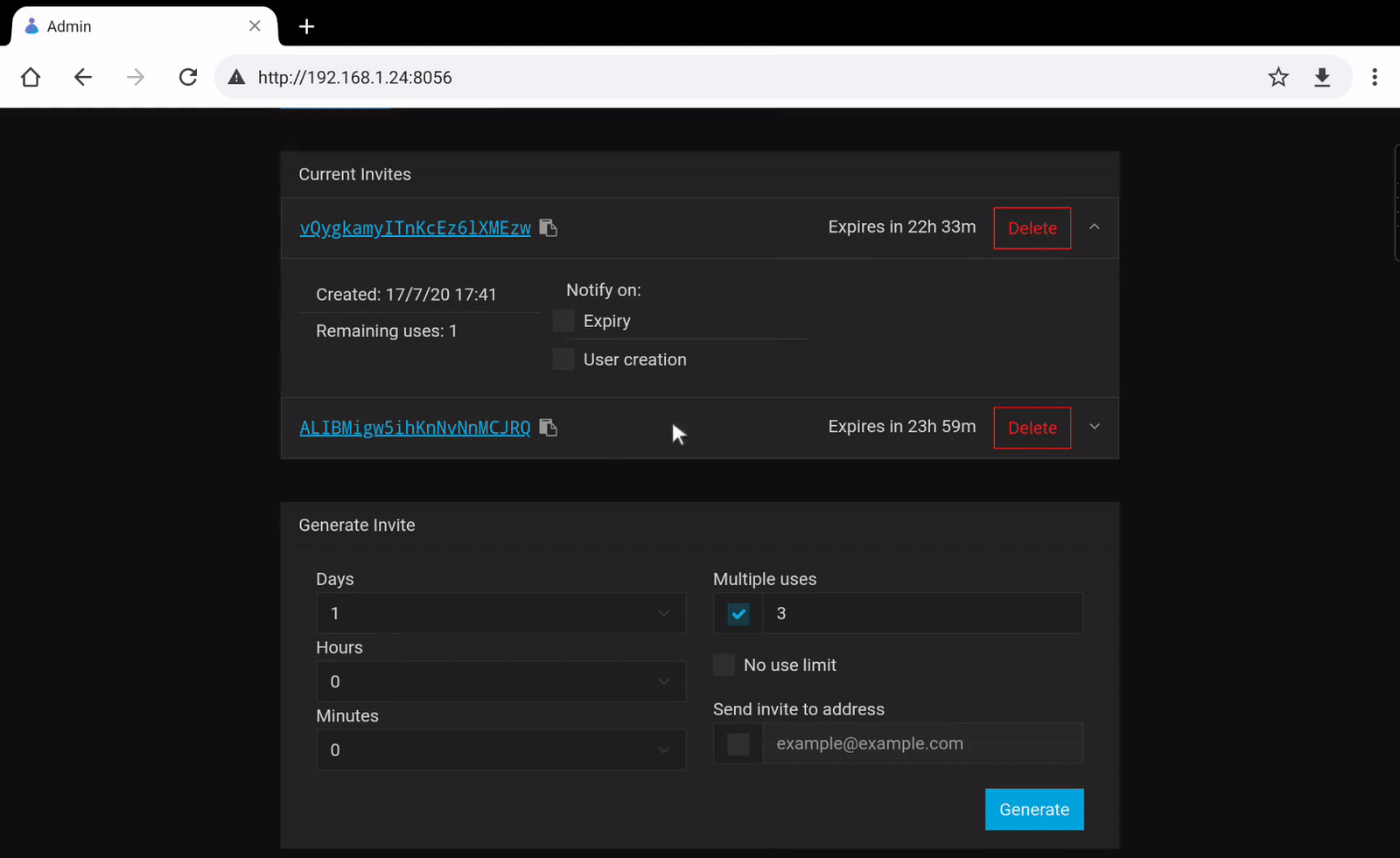mirror of
https://github.com/hrfee/jellyfin-accounts.git
synced 2026-01-02 23:31:12 +00:00
4.8 KiB
4.8 KiB
👀 ➡️: Have a look at jfa-go, a rewrite in Go. Identical look and features but might be faster.
this version likely won't get too many more updates, so i recommend you switch.
A basic account management system for Jellyfin.
- Provides a web interface for creating/sending invites
- Sends out emails when a user requests a password reset
- Uses a basic python jellyfin API client for communication with the server.
- Uses Flask, HTTPAuth, itsdangerous, and Waitress
- Frontend uses Bootstrap
- Password resets are handled using smtplib, requests, and jinja
Interface
Get it
Requirements
- This should work anywhere Python does, i've tried to not use anything OS-specific. Drop an issue if there's a problem, of course.
* python >= 3.6
* flask
* flask_httpauth
* jinja2
* requests
* itsdangerous
* passlib
* pyOpenSSL
* waitress
* pytz
* python-dateutil
* watchdog
* packaging
Install
Usually as simple as:
pip install jellyfin-accounts
If not, or if you want to use docker, see install.
Usage
- Passing no arguments will run the server
usage: jf-accounts [-h] [-c CONFIG] [-d DATA] [--host HOST] [-p PORT] [-g]
jellyfin-accounts
optional arguments:
-h, --help show this help message and exit
-c CONFIG, --config CONFIG
specifies path to configuration file.
-d DATA, --data DATA specifies directory to store data in. defaults to
~/.jf-accounts.
--host HOST address to host web ui on.
-p PORT, --port PORT port to host web ui on.
-g, --get_defaults tool to grab a JF users policy (access, perms, etc.)
and homescreen layout and output it as json to be used
as a user template.
Setup
New user template
- You may want to restrict a user from accessing certain libraries (e.g 4K Movies), display their account on the login screen by default, or set a default homecrseen layout. Jellyfin stores these settings in the user's policy, configuration and displayPreferences.
- Make a temporary account and configure it, then in the web UI, go into "Settings => Set new account defaults". Choose the account, and its configuration will be stored for future use.
Emails/Password Resets
- When someone initiates forget password on Jellyfin, a file named
passwordreset*.jsonis created in its configuration directory. This directory is monitored and when created, the program reads the username, expiry time and PIN, puts it into a template and sends it to whatever address is specified inemails.json. - The default forget password popup references the
passwordreset*.jsonfile created. This is confusing for users, so a quick fix is to edit theMessageForgotPasswordFileCreatedstring in Jellyfin's language folder. - Currently, jellyfin-accounts supports generic SSL/TLS or STARTTLS secured SMTP, and the mailgun REST API.
- Email html is created using mjml, and jinja templating is used. If you wish to create your own, ensure you use the same jinja expressions (
{{ pin }}, etc.) as used indata/email.mjmlorinvite-email.mjml, and also create plain text versions for legacy email clients.
Configuration
- Note: Make sure to put this behind a reverse proxy with HTTPS.
On first run, access the setup wizard at 0.0.0.0:8056. When finished, restart the program.
The configuration is stored at ~/.jf-accounts/config.ini. Settings can be changed through the web UI, or by manually editing the file.
For detailed descriptions of each setting, see setup.
Donations
I strongly suggest you send your money to Jellyfin or a good charity, but for those who want to help me out, a Paypal link is below.



